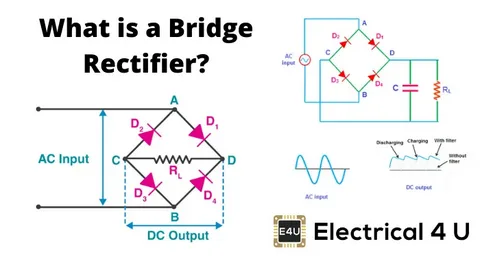Table of Contents
ToggleWhat is a Rectifier?

To start, let’s clarify what a rectifier is.
A rectifier is a crucial component in electronics that converts alternating current (AC) into direct current (DC).
In layman’s terms, it changes the flow of electricity, allowing devices to operate smoothly.
Most electronic devices, from smartphones to laptops, depend on DC for stable performance.
Without rectifiers, many of our daily-use devices simply wouldn’t function as they should.
Understanding Wuthering Waves
Now, what do we mean by wuthering waves?
While it may evoke images of nature’s fury, in the realm of electronics, it refers to erratic and unpredictable waveforms that can affect performance.
These wuthering waves can be caused by various factors, including:
- Environmental influences: Fluctuations in temperature or humidity can affect electrical signals.
- Load changes: As devices turn on and off, they can create instability in the electrical supply.
When we talk about rectifier wuthering waves, we’re discussing how rectifiers handle these unpredictable currents to ensure a steady power supply.
The Role of Rectifiers in Managing Wuthering Waves
Rectifiers are designed to tackle the challenges presented by wuthering waves. Here’s how they do it:
1. Filtering
One of the primary functions of a rectifier is to filter out the ripples in the DC output.
- Capacitors are typically used in conjunction with rectifiers to smooth out fluctuations.
- By storing charge and releasing it slowly, capacitors help maintain a steady voltage.
2. Regulation
To ensure consistent output, voltage regulators are often paired with rectifiers.
- These regulators adjust the output voltage, compensating for any fluctuations in the input.
- This combination is essential for devices that require stable voltage levels to operate effectively.
Types of Rectifiers
Understanding the different types of rectifiers is key to knowing how they handle wuthering waves. Here’s a rundown:
1. Half-Wave Rectifier
- A half-wave rectifier uses only one half of the AC cycle.
- It’s straightforward but inefficient, resulting in a pulsed DC output.
- The output isn’t very smooth, making it less ideal for devices sensitive to voltage fluctuations.
2. Full-Wave Rectifier
- This type utilizes both halves of the AC cycle, providing a smoother DC output.
- It can be implemented using two diodes or a bridge configuration.
- Full-wave rectifiers are typically more efficient and better suited for handling wuthering waves.
3. Bridge Rectifier
- A bridge rectifier uses four diodes arranged in a bridge configuration.
- This design allows for both polarities of input voltage to be used.
- It maximizes efficiency and is particularly effective in managing wuthering waves, resulting in a steadier DC output.
Why Do Wuthering Waves Matter?

So, why should we care about wuthering waves in the first place?
1. Device Performance
Devices reliant on a stable DC supply may malfunction or degrade when subjected to unstable waveforms.
- For instance, a computer might crash, or an appliance could shut down unexpectedly.
2. Energy Efficiency
An efficient rectifier that manages wuthering waves leads to better energy use and lower operational costs.
- Devices that run smoothly consume less energy, which translates to savings on electricity bills.
Real-World Applications
Now, let’s explore where rectifiers and their ability to handle wuthering waves come into play.
1. Power Supply Units
Power supply units (PSUs) are everywhere, from desktop computers to televisions.
- These units convert AC from the wall into DC that devices can use.
- A rectifier smooths out any irregularities in the input power, ensuring stable operation.
2. Renewable Energy Systems
In renewable energy systems, such as solar panels, rectifiers are essential.
- They convert the energy produced into usable DC while managing fluctuations caused by varying sunlight intensity.
- This ensures that the energy stored in batteries or used directly is stable and reliable.
3. Telecommunications
Telecommunication networks require consistent power sources to avoid interruptions.
- Rectifiers help maintain steady voltage levels, allowing communication devices to function without disruption.
- This is vital for maintaining connectivity in our increasingly digital world.
Common Problems with Rectifiers and Wuthering Waves
Despite their effectiveness, rectifiers can face challenges when dealing with wuthering waves.
Here are some common problems:
1. Overheating
When rectifiers are exposed to unstable waveforms for prolonged periods, they can overheat.
- This can lead to failure, impacting the device’s performance.
- Proper heat dissipation methods should be employed to mitigate this risk.
2. Ripple Voltage
Excessive ripple voltage can result in a less stable DC output.
- If the ripple is too high, it can affect the functionality of sensitive devices.
- Using appropriate filtering components can help reduce ripple and stabilize the output.
3. Component Wear
Rectifiers and associated components may wear out faster if they frequently handle erratic waves.
- Regular maintenance and timely replacements are essential to ensure longevity and efficiency.
FAQs About Rectifiers and Wuthering Waves
Q: What happens if a rectifier can’t manage wuthering waves?
A: Devices may malfunction, leading to performance issues or even permanent damage over time.
Q: How can I choose the right rectifier for my project?
A: Consider factors like the type of AC waveform, the voltage, and the specific requirements of your device. Researching manufacturer specifications can also provide valuable insights.
Q: Are there any alternatives to rectifiers?
A: While rectifiers are the most common solution, alternatives like DC-DC converters can be used in specific applications where voltage regulation is required.
Tips for Choosing the Right Rectifier
If you’re embarking on an electronics project, selecting the right rectifier is crucial. Here are some tips:
- Know Your Requirements: Understand the voltage and current requirements of your device.
- Consider the Input Waveform: Determine if you’re working with a pure sine wave, modified sine wave, or something else.
- Check the Efficiency Rating: Look for rectifiers with high efficiency to minimize energy loss.
- Plan for Heat Management: Ensure that your design includes adequate heat sinks or cooling methods.
The Future of Rectifiers and Wuthering Waves
As technology evolves, so do the challenges associated with electrical stability.
Here are some trends to keep an eye on:
1. Advancements in Materials
New materials are being researched to improve the efficiency and lifespan of rectifiers.
- Innovations in semiconductor technology may lead to more effective solutions for managing wuthering waves.
2. Smart Rectifiers
With the rise of smart technology, rectifiers are becoming more intelligent.
- Future rectifiers may include built-in monitoring systems to detect fluctuations in real-time, automatically adjusting to maintain stability.
3. Sustainable Solutions
As the push for renewable energy continues, rectifiers will play a pivotal role in harnessing and converting energy efficiently.
- Developing sustainable rectification methods will be essential for the future of green technology.
Conclusion
Understanding rectifier wuthering waves is vital for anyone involved in electronics.
These components are the backbone of stable electrical supply in countless devices we use daily.
By grasping how rectifiers manage the unpredictable nature of electrical waves, you can appreciate the intricacies of modern technology.
So, the next time you power up your gadgets, take a moment to reflect on the rectifiers working diligently behind the scenes.
They ensure that our devices run smoothly, even when faced with the chaos of wuthering waves.
Keep exploring, keep questioning, and who knows what else you might discover about the fascinating world of electronics!
Armed with this knowledge, you’re better equipped to tackle your projects and make informed decisions in the ever-evolving landscape of technology.
Remember, every detail matters in ensuring our devices perform at their best!

